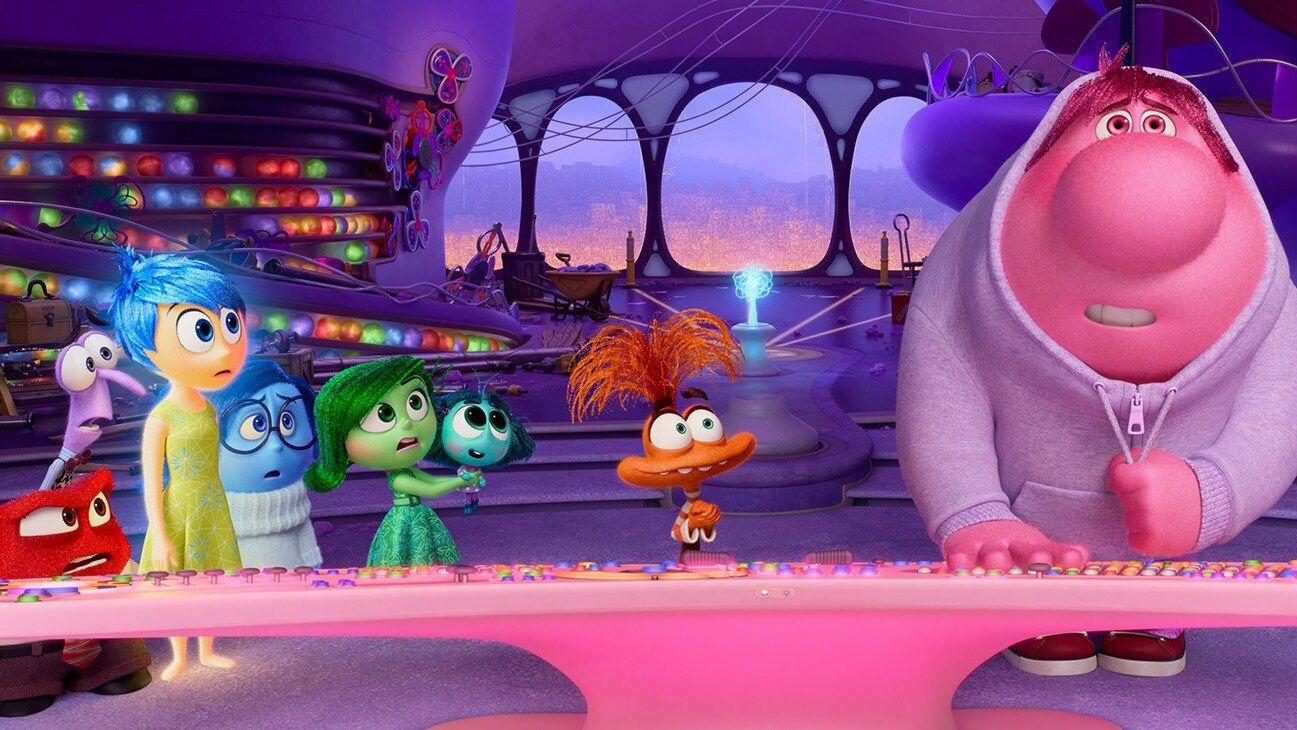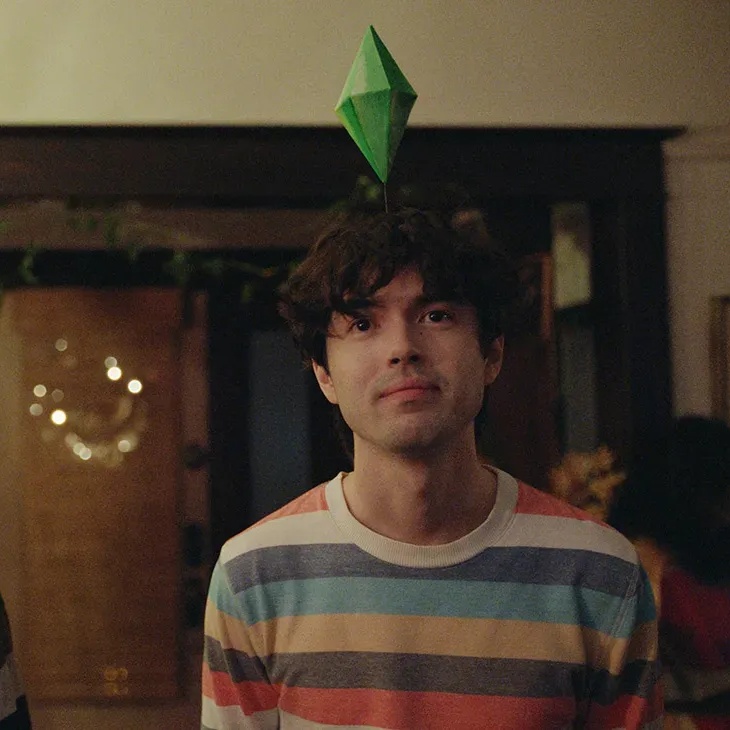When Pixar released Inside Out in 2015, it was a gamechanger for the animation industry, and for conversations about mental health. While it features the ever-relatable trope of a child (here, 11-year-old Riley) having a hard time adjusting to a new city and school, that’s just the catalyst for the real story.
The movie’s lead characters are actually the personified emotions that exist in Riley’s mind (Joy, Sadness, Fear, Disgust, and Anger), and work in different, often surprising, ways. We think, for example, that Sadness must be suppressed and Joy must overpower her, but after 90-odd minutes of gorgeous adventure and Pixar’s trademark hilariously wise dialogue, it’s Sadness who saves the day. The lesson? Sadness isn’t always bad, and we need to be able to process it and talk about it.
This weekend, we will meet Riley again, when Inside Out 2 hits theatres. She’s a teenager now, so of course, there will be new emotional landscapes for Pixar (now a subsidiary of Disney) to explore. Joining the party are Envy, Ennui, Embarrassment, and Anxiety.
Movies like this are a far cry from the animated films I grew up watching 30-odd years ago. Those were fantastical, brightly coloured tales about saving the environment, saving a culture, saving a city or a kingdom from some great external evil. Now, though, mainstream animation is becoming about saving yourself from your own inner demons.
To be fair, animation has always served up personal life lessons to the protagonist as they go forth into battle with an evil tyrant or try to find their lost clownfish son or avenge the death of their lion father and take their rightful place in the jungle. Studio Ghibli’s films (arguably deeper and more mature than traditional Disney fare) have also always shown the lead’s personal growth alongside larger themes of environmentalism, poverty, respect for all life forms. But that growth, that inner world and the transformations in it, always served as the subtler message; it was the core but not the plot. Today, they are becoming the whole plot. And leading the charge is Pixar.
It began tentatively, with the 2009 film Up, an achingly beautiful portrayal of loss, grief, and ageing, albeit still within the framework of a much more involved chain of events. The director of Up, and Pixar’s chief creative officer, Pete Docter, then found inspiration for Inside Out (which he co-wrote and directed) in the changes he saw in his own young daughter as she grew older. He held extensive consultations with psychologists and researchers to make sure the interplay of emotions in Riley’s mind was portrayed accurately.
In 2020, when the world was turned upside down, death was on everyone’s mind, and anxiety about life and the business of living made for daily conversation on group chats, Docter and co-director Kemp Powers gave us Soul, a warm, witty, inventive tale about the meaning of life, what makes us want to live, and our purpose in this world. Then, two years later came Pixar’s first solo female director, Domee Shi, with Turning Red, a unique attempt at normalising menstruation and the emotional and hormonal roller coaster that is puberty. Last year, Pixar delivered Elemental, which delved into emotional upheavals along with the struggles of immigrants. Director Peter Sohn (himself a second-generation Korean immigrant who grew up in New York) even spoke about how he hoped that his film would help audiences, especially children, understand the importance of mental health and where our emotions stem from. And today, Kelsey Mann, who has been part of the creative team for many of these films, makes his feature directorial debut with Inside Out 2.
It’s not surprising that Pixar would explore themes of emotional and mental health for movies aimed at family audiences. Multiple reports suggest that anxiety and depression in children are on the rise, both globally and in India. The pandemic, of course, was partly responsible for this. Another major reason is climate anxiety—a study of young people across the world, aged 16 to 25, showed that an overwhelming majority felt frightened, sad, powerless, and guilty about the future of the planet, and almost half said these thoughts “negatively affected their daily life and functioning”.
The good thing is that many more young people, especially in urban centres, are talking openly about their mental health. Dr Pramit Rastogi, a child and adolescent psychiatrist and the medical director of the STEPS Center for Mental Health in Gurugram, shares that “more and more referrals are coming in where the child is bringing their parents in [to the clinic] and saying, ‘I’m struggling, I need help and you don’t get it.’ In a knowledge-rich world, children are able to put their thoughts together, do their research, and realise they might not be doing well. And as parents get access to better resources, they are also trying to figure out why their kid is not doing well despite having everything going for them.”
In his BAFTA acceptance speech for Inside Out in 2016, Docter spoke directly to children and made a plea for them to use their creativity to express themselves. He said, “Our film takes place inside the mind of an 11-year-old girl. That was hard to figure out, but not as tough as actually being 11. So for anyone who is out there, trying to figure things out in secondary school, it’s okay to feel scared or angry or sad, but please do us a favour and express yourself. Sing, write, draw; the world will be a better place for it.”
And Pixar is clearly there to help. In fact, Dr Rastogi tells me he is “very impressed with Pixar’s unique way of showing non-human entities facing human problems so that it doesn’t feel as dark or triggering.” By breaking down scary ‘adult’ words like anxiety and depression into vibrantly animated, funny stories told in a language that children speak, pop culture can and does encourage families to talk about mental health issues and give young people a vocabulary or context to explain their emotions that they might otherwise have struggled to find. And that, both Doctor and Docter agree, can only be a good thing.


